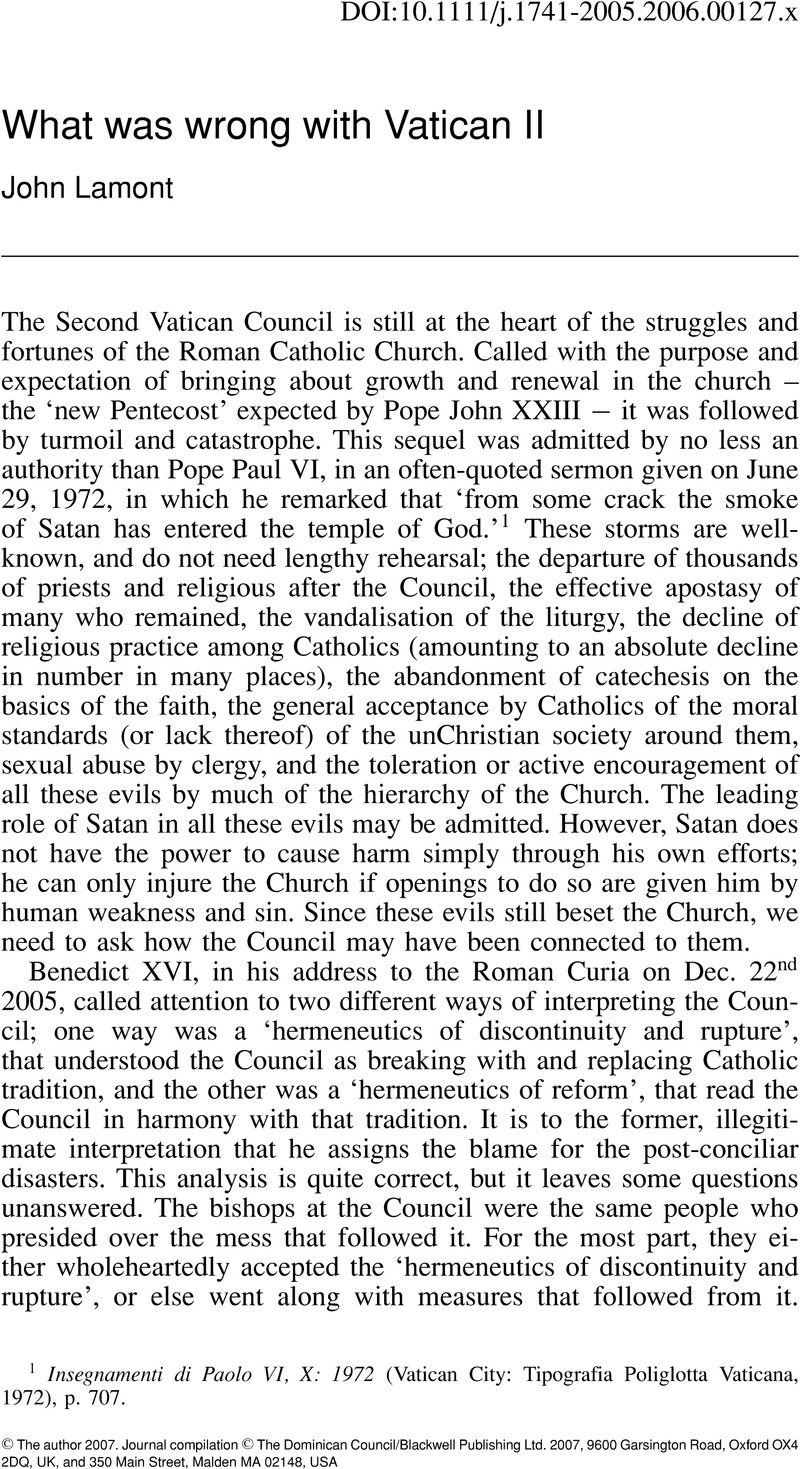No CrossRef data available.
Published online by Cambridge University Press: 01 January 2024

1 Insegnamenti di Paolo VI, X: 1972 (Vatican City: Tipografia Poliglotta Vaticana, 1972), p. 707Google Scholar.
2 Decrees of the Ecumenical Councils, vol. 1: Nicaea I to Lateran V, ed. Tanner, Norman P. S.J., (London: Sheed & Ward, 1990), p. 224Google Scholar.
3 I have argued for this in an article in the July/August New Oxford Review, ‘Why the Second Vatican Council Was a Good Thing’, that is available online at http://www.newoxfordreview.org/article.jsp?did=0705-lamont.
4 Bouyer, Louis, The Decomposition of Catholicism, tr. Quinn, C. V. (London: Sands & Co., 1970), p. 99Google Scholar.
5 Benedict, XV, Maximum Illud, in Modern Missionary Documents and Africa (Dublin: Dominican Publications, 1982)Google Scholar, ed. Raymond Hickey O.S.A., pp. 36–7, 42.
6 Pius IX, Quanto Conficiamur Moerore, para. 7, in The Papal Encyclicals 1740-1848, ed. Ihm, Claudia Carlen (Raleigh: McGrath Publishing Co. 1981), p. 370Google Scholar.
7 Denzinger, H., The Sources of Catholic Dogma, 30th edn., tr. Deferrari, Roy J. (Binghamton: Herder, 1955)Google Scholar, sect. 1647, p. 416. These passages from Pius IX in fact have a wider range than unbelievers as described here, since they apply to everyone outside the Catholic Church. However, their having this wider range means that they apply to unbelievers in the narrower sense used here as well.
8 Vatican II, Decree Ad Gentes, para. 7, in Vatican Council II: The Conciliar and Post-Conciliar Documents, ed. Flannery, Austin O.P., new ed. (New York: Costello, 1992), p. 821Google Scholar.
9 Constants in Context; A Theology of Mission for Today, Bevans, Stephen B. SVD and Schroeder, Roger P. SVD (Maryknoll, NY: Orbis Books, 2004), p. 284Google Scholar.
10 Vatican II, Dogmatic Constitution Lumen Gentium, para. 2, in Flannery (1992), p. 350.
11 See R. Michael Dunnigan and Charles Wilson, ‘Overdosing on the Medicine of Mercy’, June 2004, at.
http://www.st-joseph-foundation.org/newsletter/lead.php?document=2004/22-3.
12 Quoted in in Dunnigan and Wilson (2004).
13 In an interview in 30 Days, June 2001.
14 In an interview in the Catholic Herald, May 2002.
15 On this see the standard work by Pinckaers, Servais O.P., The Sources of Christian Ethics, tr. Noble, Mary Thomas (Edinburgh: T. & T. Clark, 1995)Google Scholar.
16 Pius IX, Quanto Conficiamur Moerore, in Ihm (1981), para.3 p. 369, and para. 10 p. 371.